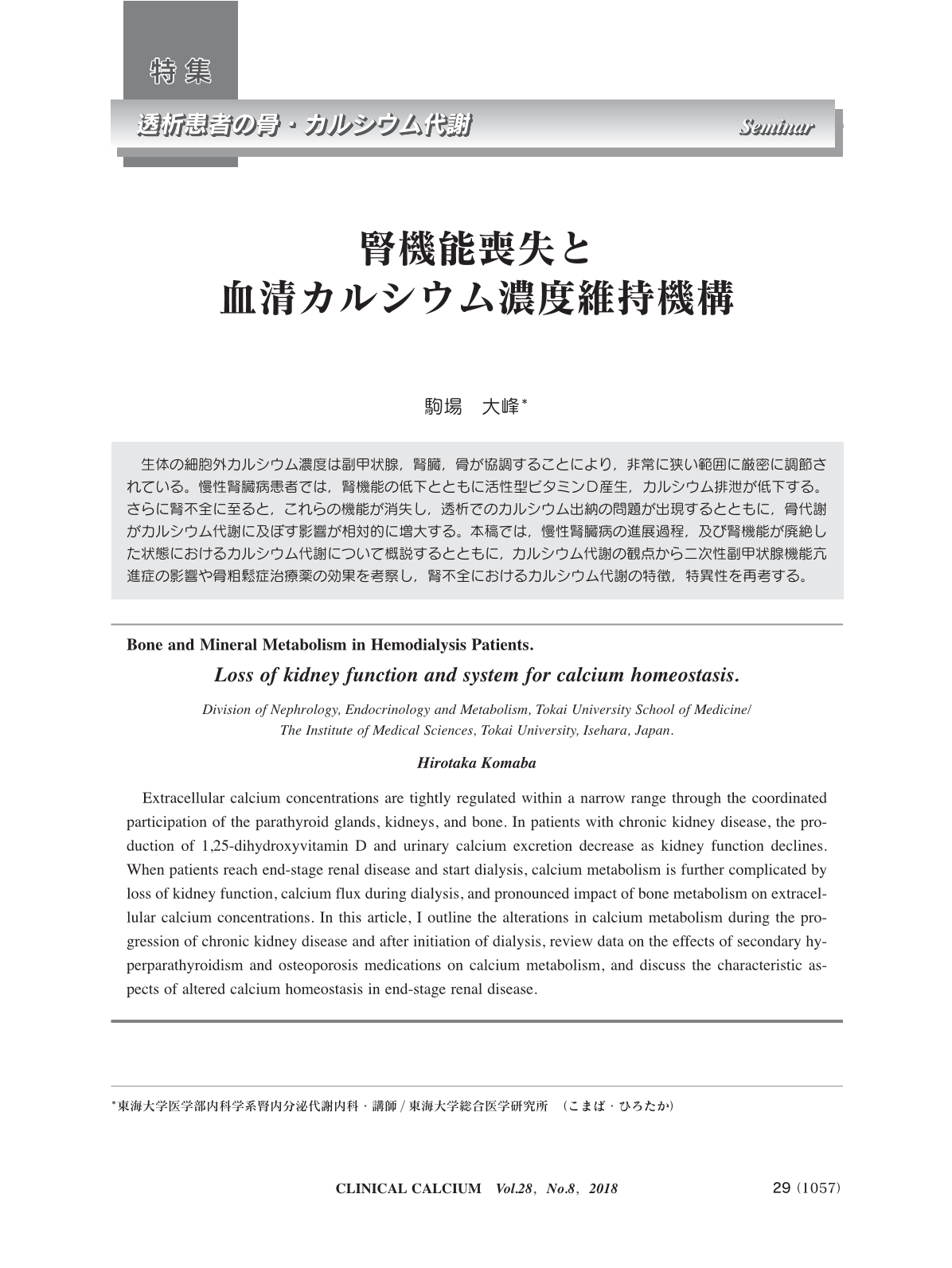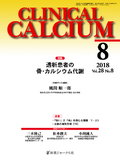Japanese
English
- 有料閲覧
- Abstract 文献概要
- 1ページ目 Look Inside
- 参考文献 Reference
生体の細胞外カルシウム濃度は副甲状腺,腎臓,骨が協調することにより,非常に狭い範囲に厳密に調節されている。慢性腎臓病患者では,腎機能の低下とともに活性型ビタミンD産生,カルシウム排泄が低下する。さらに腎不全に至ると,これらの機能が消失し,透析でのカルシウム出納の問題が出現するとともに,骨代謝がカルシウム代謝に及ぼす影響が相対的に増大する。本稿では,慢性腎臓病の進展過程,及び腎機能が廃絶した状態におけるカルシウム代謝について概説するとともに,カルシウム代謝の観点から二次性副甲状腺機能亢進症の影響や骨粗鬆症治療薬の効果を考察し,腎不全におけるカルシウム代謝の特徴,特異性を再考する。
Extracellular calcium concentrations are tightly regulated within a narrow range through the coordinated participation of the parathyroid glands, kidneys, and bone. In patients with chronic kidney disease, the production of 1,25-dihydroxyvitamin D and urinary calcium excretion decrease as kidney function declines. When patients reach end-stage renal disease and start dialysis, calcium metabolism is further complicated by loss of kidney function, calcium flux during dialysis, and pronounced impact of bone metabolism on extracellular calcium concentrations. In this article, I outline the alterations in calcium metabolism during the progression of chronic kidney disease and after initiation of dialysis, review data on the effects of secondary hyperparathyroidism and osteoporosis medications on calcium metabolism, and discuss the characteristic aspects of altered calcium homeostasis in end-stage renal disease.



